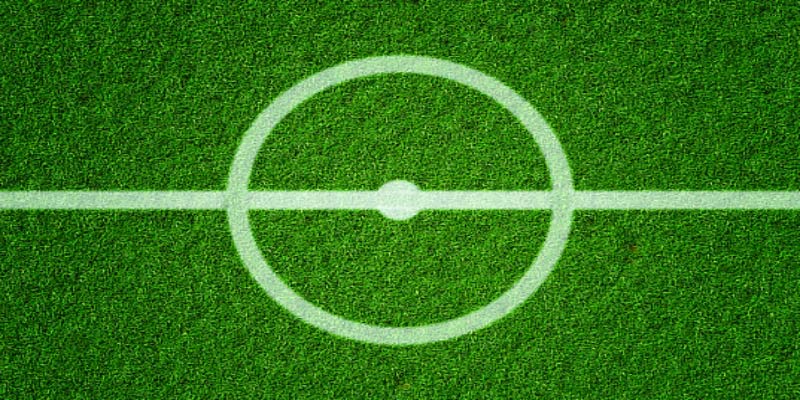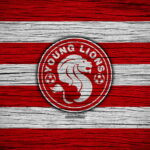The center line in football is more than just a simple division of the pitch; it plays a crucial role in shaping the game’s strategy. It guides player movements, offensive tactics, and defensive setups, directly influencing how teams transition between attacking and defending. This invisible line controls the tempo and rhythm of the match, making it a key factor in determining the outcome. For players, coaches, and fans, understanding its impact is vital. Its significance goes beyond a mere physical marker—it’s a cornerstone of football strategy, much like the insights offered in understanding the game.
Basic Role of the Center Line on the Pitch
At its core, the center line serves multiple functions that are fundamental to the organization of play on the pitch. Its existence allows teams to define their spatial orientation, facilitating a more coherent understanding of where players should be positioned during various phases of play.
Additionally, the center line aids in the establishment of team shape, which directly impacts how the team approaches both offensive and defensive scenarios. A well-defined team shape can make it easier for players to communicate and execute their intended actions, while confusion over spatial orientation can lead to disorganization and missed opportunities.
Facilitating Team Shape and Organization
One of the primary roles of the center line is to assist in maintaining team shape. In an organized setup, players have specific roles and responsibilities, often structured around the center line’s position.
When a team succeeds in maintaining its shape, it becomes increasingly difficult for opponents to penetrate through the middle of the pitch. The center line effectively acts as a barrier that teams can use to either engage attackers or transition out of a defensive posture more effectively.
For example, a midfield trio might position themselves in relation to the center line, ensuring that they are close enough to provide support to both defensive and attacking units. This enables quick transitions and creates overload situations, making it harder for the opposition to track players’ movements.
Facilitating Communication Between Players
The center line also holds significant value in terms of facilitating communication among teammates. Players often rely on visual cues provided by this line to gauge their positioning relative to others, making effective communication essential for coordinated efforts.
Effective communication hinges on clarity and precision. When players are adequately spaced along the center line, they can signal intentions, encouraging greater cohesion in movements and tactical executions. This clarity is particularly important during fast-paced transitions or intricate passing sequences, where miscommunication could lead to turnovers and scoring opportunities for the opponent.
Enhancing Positional Play
Another critical function of the center line is its role in enhancing positional play. Teams that effectively utilize their positions relative to the center line can control the game’s tempo and rhythm. By establishing strong positional play, teams can dictate the pace of the match, forcing opponents to react rather than impose their strategy.
When players maintain their positions concerning the center line, it creates an environment conducive to building attacks and pressing defensively. For example, wingers or full-backs may look to occupy wider areas, stretching the opponent’s defense, while central midfielders can roam freely to exploit gaps that open up.
Teams that leverage the center line effectively become adept at swaying the balance of play in their favor, creating more opportunities to score while minimizing threats against their own goal.
The Role of the Center Line in Football Tactics
As teams develop their tactical philosophies, the center line takes on an even more profound significance. It becomes a focal point around which strategies are crafted, serving to unify individual player roles under a cohesive plan.
Coaches often design formations and strategies that revolve around the center line, emphasizing its importance in dictating the team’s overall performance. Understanding its tactical implications is vital for players seeking to maximize their contributions to the team.
The Center Line and Tactical Division of the Team
The center line essentially divides the pitch into offensive and defensive zones, shaping the tactical approach a team may take during different phases of play. When approaching offensive scenarios, teams must consider how closely they can operate to the center line without losing their shape or inviting counter-attacks.
Defensively, the center line serves as a crucial reference point, guiding players on where to position themselves to cut off passing lanes and limit space for the opposition.
Players are trained to recognize when to apply pressure and when to drop back, using the center line as a guide. An understanding of these principles informs both individual and collective decision-making, ensuring that the team remains organized regardless of the situation on the pitch.
The Impact of the Center Line on Game Control
Control of the game often hinges on a team’s ability to manage space effectively, and the center line acts as a crucial element in this equation. By strategically positioning players in relation to the center line, teams can dictate the tempo of play, disrupt the opponent’s rhythm, and create openings for themselves.
When a team controls the center line, it can initiate attacks with greater frequency and efficiency. Midfielders who are aware of their positioning can exploit gaps left by defenders, offering viable passing options and increasing fluidity in build-up play. This ultimately leads to a more dynamic and unpredictable offense.
Conversely, failing to control the center line can lead to chaos and vulnerability. Teams that allow their opponents to dominate the central areas risk being overrun and losing possession, leaving them exposed to swift counterattacks.


